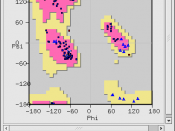Blind Spot: Seeing more than your eye does.
People generally assume that what you see is very much what your eye sees and reports. In reality, your brain fills in very substantially to the information it gets from your eye (Pessoa, Thompson & Noe, 2001). This means a good deal of what you see is made up by your brain. Well, how do we explain this filling in phenomenon? Understanding the concept Blind Spot will be the first step to answering this question.
Blind spot is a small part of your retina where the optic nerve and blood supply for the retina enters the eye. This position existing in both eyes is devoid of light receptors thus there is no vision possible at this point (Durgin,Tripathy & Levi, 1995; St. James, Schneider, & Rodgers, 1997). However, this region of visual field is never perceived to have a gap. There are three apparent explanations for why no gap is generally noted.
Firstly, since the two blind spots are in different field of vision if one eye does not see something the other one will (St James et al, 1997). Secondly, the eyes also are in constant motion obtaining a complete version of every scene, thus making the effect of blind spot negligible (Bridgeman, Vander Hejiden & Velichkovsky, 1994). The third approach involves psychological input. What you see is something the brain is making up. The region of the visual field corresponding to the blind spot appears to be filled in (Durgin, et al, 1995; Ramachandran, 1995). Pessoa et al (2001) argues that there is good evidence for neural filling in.
Other approaches to filling in concept suggests that the brain produces an internal representation of the world (Dennett, 1991; O'Regan, 1992) and that seeing is a way of acting (O'Regan &...



Interesting
That stuff is really really interesting. He knows what he is talking about. Very informative!
2 out of 2 people found this comment useful.